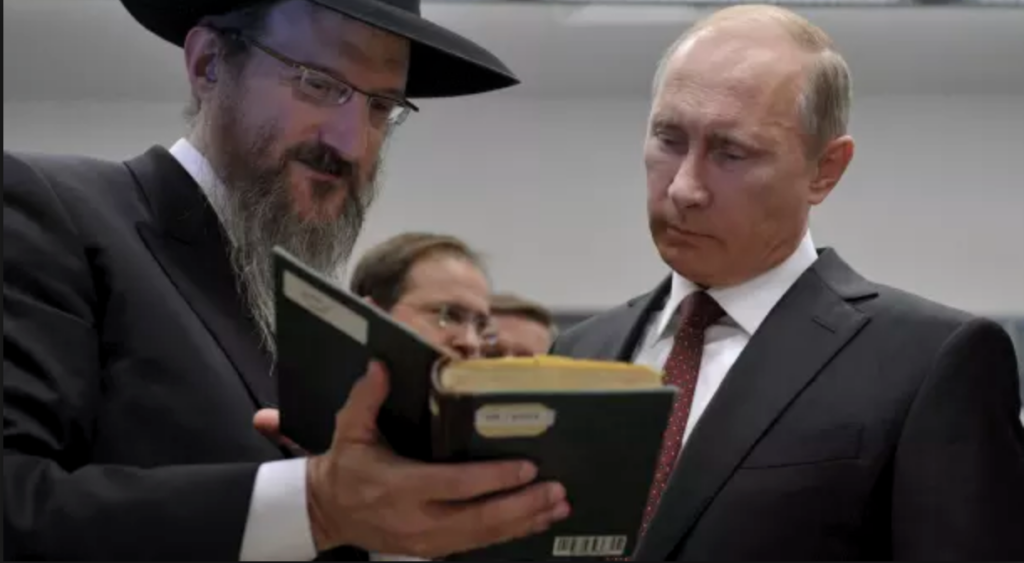Thomas Ambrosio is a professor of political science at North Dakota State University. His research interests include historical game studies, authoritarianism, authoritarian diffusion, critical geopolitics, and the domestic and international politics of the former Soviet Union.
Jonathan Ross is a graduate student at North Dakota State University in the Masters of Public Policy program.
Relations between the West and Moscow appear fundamentally broken following Russia’s full-scale invasion of Ukraine in February 2022. In earlier eras, these fractured ties may have signaled a rivalry for influence and geopolitical positioning. But the March 2024 declaration by a Kremlin spokesman that a state of “war” now existed with “the collective West” confirmed what observers have known for some time: the two sides have moved from competitors to enemies, with enduring and mutually-reinforcing enemy images.
These circumstances prompted us to reflect on what came before, and how we got here. To this end, we revisited Europe Divided, a two-player board game released in 2020 that simulates the geopolitical struggle between Russia and the West over Eastern Europe and the Caucasus from 1992 to2019. We had originally played it during 2020-2021 as part of our research into geopolitical ludology, with the latter word deriving from the Latin ludus, meaning “game” or “play.” It was fascinating to play the game again recently with the benefit of hindsight. This post discusses some of what we gathered from our recent playthroughs, with the aim of sparking greater interest in the utility of games as tools for better understanding the past, present, and even future.
Those trained in political science and foreign affairs may not know that there is an established field of ludic studies that takes play seriously—not merely as an idle pastime often associated with our youth, but rather as an activity deeply embedded in who we are as human beings. One growing subfield within this broader area is historical game studies, which holds that games can serve as a means for designers and players to “make meaning out of the past.” Historical games accomplish this meaning-making through the assumptions their creators make about the core dynamics of particular periods or events, as well as through decisions about how to implement these in ludic form. By allowing players to vicariously experience history, such games encourage us to think more deeply about the main drivers of the past and explore the causes of historical developments.
Europe Divided is an excellent example of a historical game. It is firmly rooted in the actual (or plausible) events of its chosen period through its deployment of Action Cards like Eastern Partnership and Hybrid Warfare and Headline Cards like Transnistria War and ‘Montenegrin Coup Attempt. There is so much that could be written on the issues that Europe Divided raises about the course of post-Soviet European geopolitics, but we will focus only on three topics: the inevitability of conflict, the security dilemma, and real-world consequences.
First, the central assumption of Europe Divided is that the dissolution of the Eastern Bloc and Soviet Union did not end struggle for European domination, but only inaugurated a new Cold War—this time between a weakened and resentful Russia and an ascendant Western coalition of NATO and the European Union. In a parallel to the current situation, the game frames this state of affairs as a zero-sum competition of winners and losers, with compromise seemingly impossible. However, is this framing correct? Was the diplomatic promise of the early 1990s just a mirage? Was the current conflict really inevitable?
For purposes of the game, the answer to all these question is “yes.” The rules, game mechanics, and victory conditions all work to push both players toward undertaking aggressive actions against one another. However, as we played Europe Divided again, we engaged in a thought experiment about alternative real-life paths that each side could have taken to avoid escalation. Scholars, commentators, and politicians will long debate whether NATO expansion “provoked” Moscow, or whether Russian actions and innate revanchism pushed it toward its full-scale invasion of Ukraine. This question has limited utility because, no matter how it is decided, it is impossible to change the past and “rerun” history.
It makes sense that Europe Divided sets conflict up as unavoidable, since it was designed in the late 2010s, when East-West relations had already significantly worsened. But envision the possibility of an alternative to Europe Divided: a cooperative board game in which the “Western” and “Russian” players must jointly manage a variety of international crises and internal pressures that have the potential of spoiling their relationship. If we apply this framework to the real world, it should engender more serious consideration about whether, with different choices, the continent might now look quite different than it does today. Perhaps we would always have wound up here, given the interests and identities of the two sides. Nevertheless, we were reminded that it is essential to avoid hindsight bias or teleological reasoning about how history actually unfolded.
A second aspect of the renewed East-West rivalry that plainly comes across in Europe Divided is the importance of the security dilemma in furthering the downward diplomatic spiral. This essential element of the game is reflected in many of the Action Cards, which include not only an effect that helps one’s own side, but also a reaction that benefits the other—thus making the initial action somewhat counterproductive. For example, both the West and Russia have Belarus cards. If a “Russian” player deploys such a card to place an Army in Belarus, the “Western” player can automatically move a NATO Army into the Baltics as a counterbalance. Similarly, if the “Western” player uses their Belarus card for any reason, the “Russian” player must see this as a threat and respond by increasing Moscow’s political influence in that country.
As players, we have a god’s-eye view of the dynamic and can clearly see how actions will play out inside the game. In reality, those locked in a security dilemma often fail to recognize that their security-seeking actions appear aggressive to the other side. Political scientist Charles Ziegler has convincingly argued that this type of impasse has long characterized real-world U.S.-Russian relations. Replaying Europe Divided drove this point home, making us return to the actual historical record for other examples of how this action-reaction process played out and how (mis)perceptions about intentions solidify on both sides.
Finally, playing Europe Divided felt like a reenactment of the nineteenth-century Russian-British competition over Central Asia, just 2500 miles westward. It was no accident that this competition came to be known as the Great Game; some commentators saw it as akin to making moves on a geopolitical chessboard to the soft underbelly of, respectively, the British Raj or Imperial Russia. Europe Divided is somewhat similar, with victory determined by collecting the most Prestige points, primarily obtained through placing influence in the contested countries. Accumulate enough influence, and you get the country’s Action Card, which symbolizes bringing it fully into your geopolitical orbit. In both real history and on the tabletop, territories are rendered as prizes to be acquired with little intrinsic value except as means to ends.
That Europe Divided replicates this mindset is not unusual, as many games overlook the interests and agency of non-player actors. We do not wish to disparage the designers who created a thoughtful (and fun!) game that earnestly sought to make sense out of this time period. Instead, replaying Europe Divided now, knowing that the real East-West competition would eventually culminate in the deadliest (and likely longest) military conflict in Europe since the Second World War, reminded us that the world is not a chessboard. Real-life geopolitical decisions can have deleterious consequences for the people caught between competing powers. While we may celebrate scoring two Prestige Points for meeting the requirements of the “Bosnian War” or “War in the Donbass” Headline Cards in Europe Divided, we should not forget that these events actually occurred. For us, it may be just a game, but it represents real conflicts with real victims. It is important to remember these real stakes even as we explore the past in ludic form.
There are many board games like Europe Divided that are so grounded in history that, when we play them, we open ourselves up to active engagement with and serious reflection on the past. What, for example, can Twilight Struggle, Labyrinth, and A Distant Plain reveal about our understanding of the Cold War, the War on Terror, and America’s ill-fated Afghan intervention, respectively? We’ll leave it for you to explore on the tabletop.



